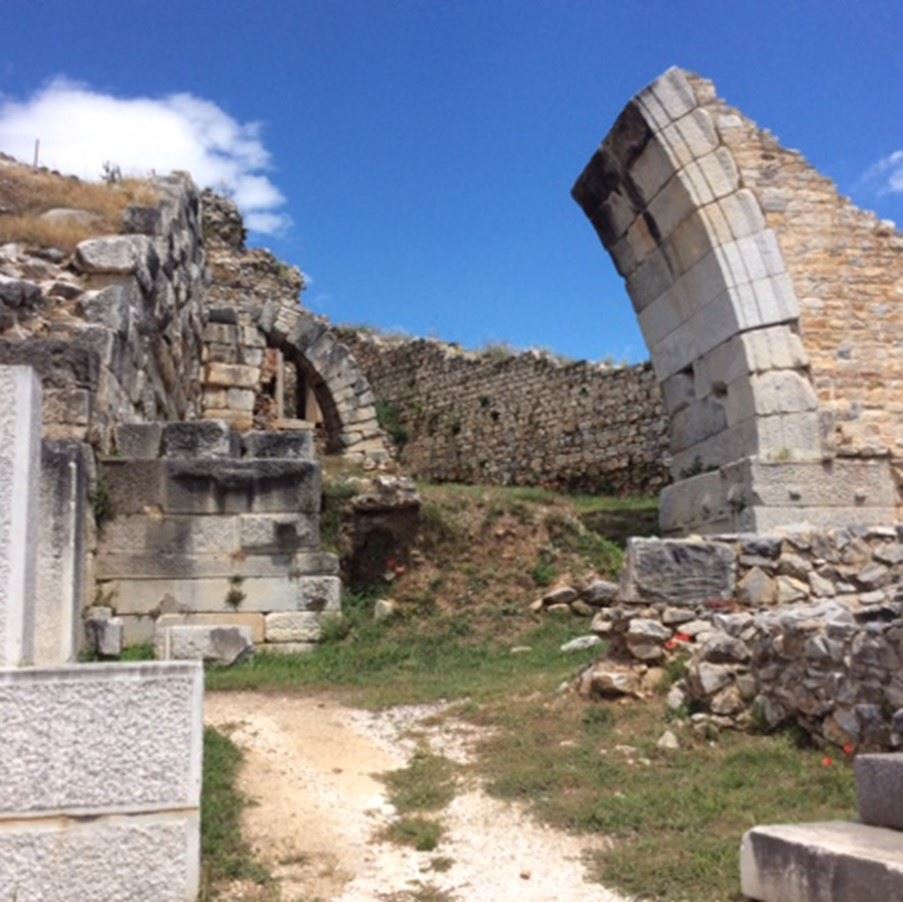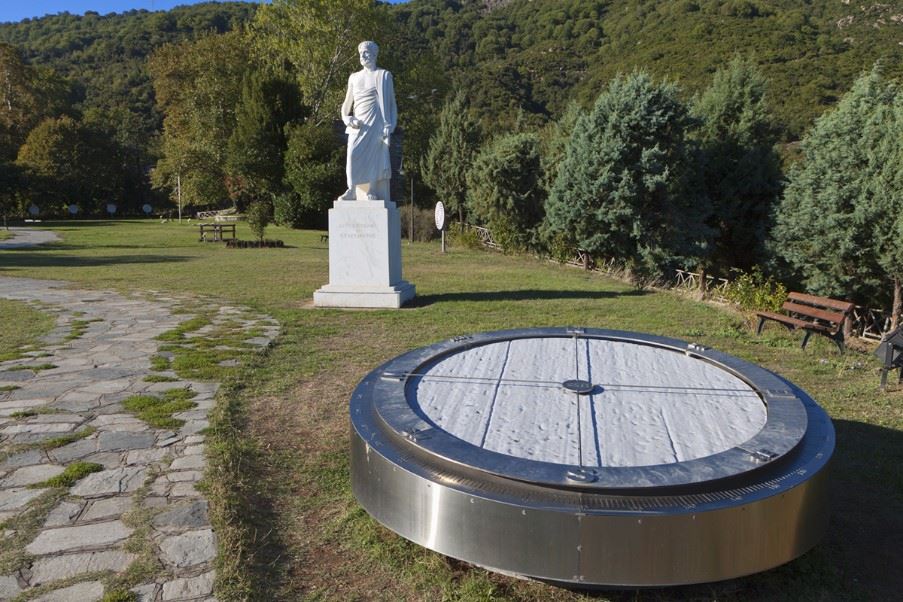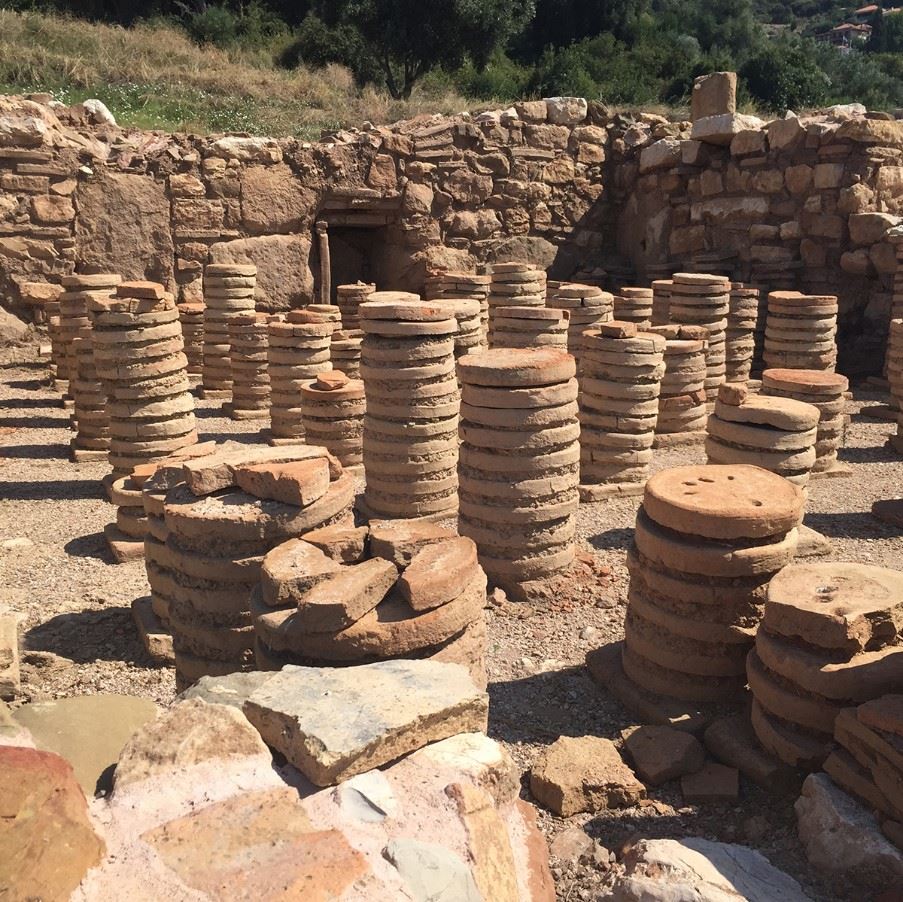ANCIENT IREON AND THE TEMPLE OF HERA – island of Samos
Between 570 and 560 BC, three monumental temples were built in the Ionic style on the eastern Aegean island of Samos plus coastal Didyma and Ephesus. These were enormous edifices.
In Samos, the architect was Rhoikos and the Temple to Hera, 52 metres wide by 106 metres long, was unprecedented in Greek architecture of that period. There were 155 pillars measuring 20 metres high.
Sadly only one pillar remains – and at just half its original height – but the site is very atmospheric and interesting, is surrounded by many other remains and is well worth exploration.
ANCIENT NEMEA – Northern Peloponnese
Jackie, our long-standing Tolon representative, has always been a fan of Nemea. In ancient Greek mythology, Herakles (Hercules) overcame the lion that lived in Nemea. In 300 BC, the Temple of Zeus was constructed; its setting is truly evocative of ancient times, despite only three pillars remaining upright (they are visible from a long distance); many other sections of ancient pillars can be seen lying on the ground around the original base of the temple.
In 1974, Professor Stephen Miller, an American from Berkeley University, California, began digging at Nemea. He had purchased the site where he knew the famous stadium of Nemea was located (he had seen aerial shots that revealed an oblong outline) – but he had no idea then that his findings would overturn archaeological thinking of the time or would take over his life to such an extent (he now lives in the village of Nemea).
The stadium at Nemea was one of four locations where the Pan-Hellenic Games, forerunners of today’s Olympic Games, were held as far back as 573 BC; the games rotated on a four-yearly cycle from Olympia to Delphi (home of the Oracle), and from Corinth to Nemea before returning to Olympia. Professor Miller was one of the key movers in the revival of the Nemean Games, which are run (barefoot) on the original stadium floor every four years; it’s a hugely exciting event – a sort of sports day for families and adults alike – attended by over one hundred different nationalities worldwide. It’s totally uncommercialised and well worth visiting (see www.nemeangames.org) or, indeed, participating in – an experience you are unlikely ever to forget. Scheduled this year for 10th and 11th June 2016, with an opening ceremony at the Temple of Zeus featuring soldiers in full ancient Spartan armour, the next Modern Nemean Games will be held in June 2020.






